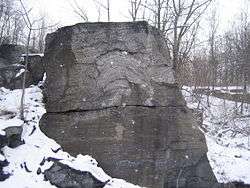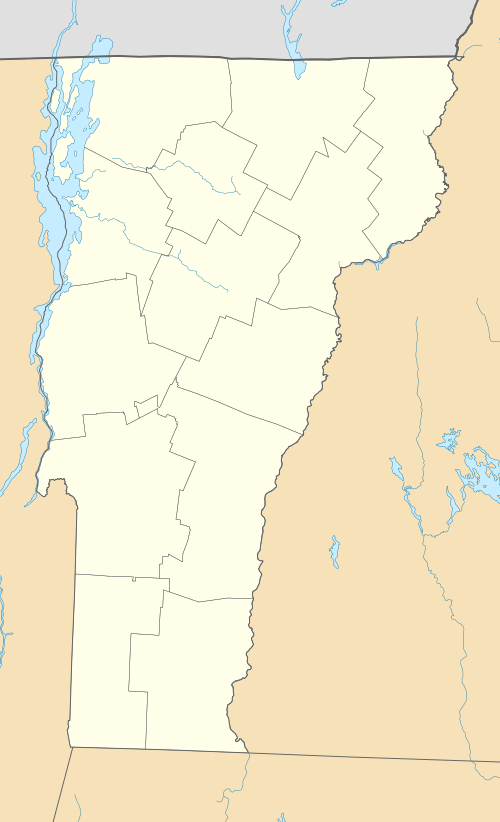Chazy Fossil Reef
Chazy Fossil Reef is a United States National Natural Landmark spanning three Lake Champlain islands in Clinton County, New York and Grand Isle County, Vermont. The site is recognized as the oldest known diverse fossil reef in the world, and contains fossils that demonstrate faunal succession.[1] The 1,567-acre (6.34 km2) site was dedicated as a National Natural Landmark in May 2009.[1]
| Chazy Fossil Reef | |
|---|---|
 Stromatoporoid at Fisk Quarry, Isle La Motte, Vermont | |
   | |
| Location | Clinton County, New York Grand Isle County, Vermont |
| Coordinates | 44°51′10″N 73°20′24″W |
| Area | 1,567 acres (6.34 km2) |
| Governing body | Mixed (federal, state, and private) |
| Designated | May 2009 |
Location
The Chazy Fossil Reef National Natural Landmark includes three islands in Lake Champlain. Included within the designated area are two preserves on Vermont's Isle La Motte; the 20-acre (8.1 ha) Fisk Quarry Preserve and the 83-acre (34 ha) Goodsell Ridge Preserve are both open to the public and managed by the Isle La Motte Preservation Trust.[2] New York's Valcour Island and Garden Island are also included as part of the landmark.[3]
Fossils
The reef is an observable portion of the larger Chazy Formation which extends from Quebec to Tennessee.[4] The location features an exposed Ordovician fossil reef, approximately 450 to 480 million years old, containing fossils from what was once a tropical marine environment.[5] The site is recognized as the oldest known fossil reef that contains substantial biological diversity.[1]
Strata from successive periods of time may be viewed across the landscape due to the tilted orientation of the sedimentary rock layers.[4] The presence of fossils from a continuous time series allow for the observation of faunal succession.[6] On Isle La Motte, the oldest fossils occur at the southern end of the island, with progressively newer layers visible toward the island's north end.[4]
Among the preserved specimens are prehistoric stromatoporoids, gastropods, cephalopods, echinoderms, brachiopods, sponges, coral, bryozoa and stromatolites.[6]
See also
References
- "Chazy Fossil Reef". National Natural Landmarks Program. National Park Service. June 28, 2012. Retrieved September 16, 2016.
- "Preserves". Isle La Motte Preservation Trust. Retrieved September 16, 2016.
- Winslow, Mike. "The Chazy Reef". Lake Champlain Committee. Retrieved September 16, 2016.
- "A Walk Through Time". Isle La Motte Preservation Trust. Archived from the original on April 14, 2016. Retrieved September 16, 2016.
- Braun, David Maxwell (February 4, 2009). "U.S. Designates Four New National Natural Landmarks". Voices. National Geographic Society. Retrieved September 16, 2016.
- Mehrtens, Charlotte (1998). "Geology of Vermont - Chazy Reef at Isle LaMotte". Vermont Geological Survey. Archived from the original on March 6, 2016. Retrieved September 16, 2016.